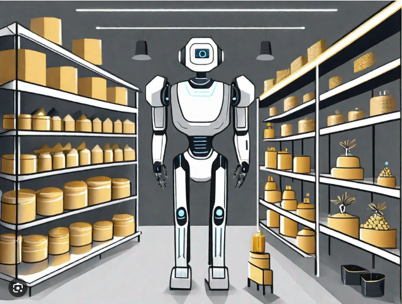As temperatures begin to fall across much of the country, winter preparation becomes an important part of keeping facilities, workshops, warehouses, and job sites running smoothly. Cold weather can slow productivity, create safety concerns, and place extra stress on equipment—and the transition into winter often happens faster than expected.
Whether you manage a distribution center, oversee building maintenance, or simply want a more comfortable workshop at home, here’s a practical, high-level checklist to help prepare your space for colder months ahead.
1. Evaluate Your Workspace’s Heat Retention
One of the most overlooked aspects of winter readiness is simply understanding how well a space holds heat. Even small gaps or poorly insulated areas can drastically reduce overall comfort and increase energy consumption.
Start by checking:
-
Doors that don’t fully seal
-
Drafts around windows or loading docks
-
Gaps along baseboards or metal-on-metal joints
-
Areas where warm air naturally escapes (e.g., high ceilings, open roll-up doors)
A short walk-through with a thermal reader or even a simple candle test can reveal surprising airflow patterns.
2. Inspect Electrical Load Capacity
Many workplaces rely more heavily on electrical equipment during winter—from lights to charging stations to climate-control systems.
Before cold weather sets in, it’s helpful to:
-
Review your electrical panel for available load
-
Ensure circuits are not daisy-chained on old wiring
-
Identify outlets that support high-draw equipment
-
Confirm that long-term extension cords are replaced with safer alternatives
This preparation can help prevent mid-season outages and reduce the risk of overloading circuits when additional devices are in use.
3. Review Ventilation and Airflow Patterns
Cold weather changes airflow inside a workspace. People close doors more often, ventilation slows, and equipment may run longer, pushing more warm air upward.
Consider:
-
Testing airflow before temperatures drop
-
Scheduling a filter replacement
-
Ensuring high-traffic areas still receive ventilation
-
Checking that ceiling fans (if available) are set to winter rotation
Proper airflow keeps temperatures consistent and can reduce hot-cold swings that affect worker comfort and equipment performance.
4. Prepare Tools, Equipment & Work Areas
Cold temperatures can affect materials and tools in subtle ways:
-
Lubricants thicken and require more frequent application
-
Batteries drain faster and may need indoor storage
-
Rubber and plastic components stiffen, reducing flexibility
-
Sensors, gauges, and adhesives may behave differently in cold air
A quick pre-winter audit helps identify items that should be stored indoors, protected from drafts, or swapped for winter-rated alternatives.
5. Revisit Safety Protocols for Winter Operations
Slower reaction times, layers of clothing, and chilled tooling surfaces can introduce hazards.
A winter review may include:
-
Updated signage for wet floors or icy entry points
-
Re-training on lifting and moving procedures
-
Clear pathways for emergency exits
-
Lighting checks for darker early mornings
-
Ensuring first-aid kits include cold-weather supplies
Even small improvements can reduce workplace incidents during winter months.
6. Consider Spot-Heating or Zone-Temperature Planning
Instead of heating an entire warehouse or shop, many facilities use temperature zoning—an efficient strategy that includes:
-
Warm zones for stationary tasks
-
Neutral zones for short, intermittent work
-
Cooler zones for storage or non-occupied areas
Spot-heating may support these zones, but the core strategy is to think through the flow of people and tasks, not the heaters themselves.
The goal is productivity, not maximum temperature.
7. Create a Winter Maintenance Schedule
Winter weather adds pressure to systems that run continuously during the colder months.
A proactive maintenance plan might include:
-
Verifying roof drainage systems
-
Scheduling battery checks for equipment
-
Inspecting seals and weatherstripping
-
Planning for snow/ice removal if relevant in your region
-
Replacing filters on a routine cadence
-
Running a test cycle of HVAC systems before the first cold snap
A smoother winter often comes down to preparation rather than reaction.
8. Plan for Supply Delays and Seasonal Demand
Winter often brings shipping delays, regional shortages, and higher demand for certain supplies.
Common items that disappear quickly from shelves include:
-
De-icing products
-
Cold-rated gloves
-
Respiratory and dust-control items (for closed-window winter work)
A short inventory review in early winter can help avoid interruptions.
Closing Thought:
Winter preparedness isn’t about making massive upgrades—it’s about understanding how your workspace behaves when temperatures drop and making thoughtful, timely adjustments.
A few early steps can dramatically improve comfort, productivity, and safety all season long.





